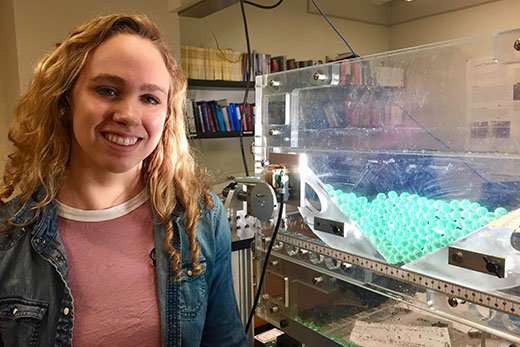Physicists show why it's hard to clog a drain with soft particles

Now scientists have shown that when the objects are squishy instead of solid, the reverse is true. The journal Physical Review E published the findings by physicists at Emory University, demonstrating that when soft particles feel a larger pressure, they squish together and the arch breaks, and so clogging is less likely.
"We've quantified the clogging dynamics of soft objects for the first time and identified the parameters that seem to explain why it's completely opposite physics to that of hard objects," says Emory physics professor Eric Weeks, whose lab conducted the research. "One surprising result is that, while friction is often suspected to be important for arch formation, our particles are frictionless and yet still form arches.
Questions about how clogs form have implications for everything from improving highway design and the flow of traffic to avoiding jam-ups of people fleeing a burning building.
The dynamics of soft objects that the Weeks lab investigated could give insights into biological processes such as the flow of cells, bacteria and other "squishy" particles through blood vessels.
"It's new physics and yet it's so simple," Weeks says. "We used tools such as a basic physics formula from 1882 and some cheap hydrogel balls that we ordered from Amazon."
More information: Xia Hong et al. Clogging of soft particles in two-dimensional hoppers, Physical Review E (2017). DOI: 10.1103/PhysRevE.96.062605
Journal information: Physical Review E
Provided by Emory University



















